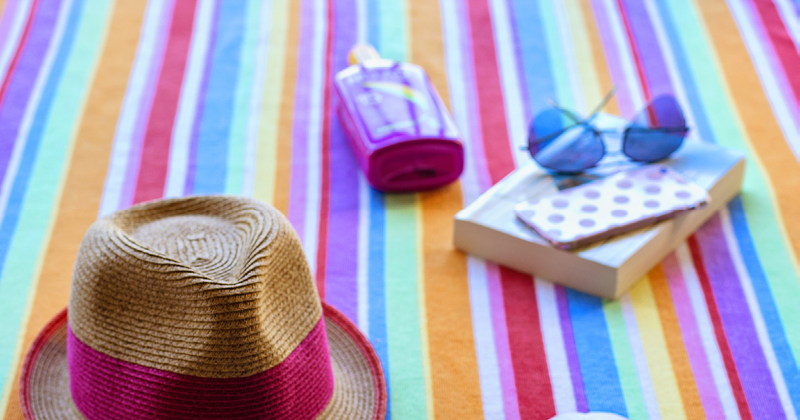This news item expired on Tuesday, September 14, 2021 so the information below could be outdated or incorrect.

With access to Buncombe County Recreation Services' pools, parks, and hiking trails, it’s natural to get out in the sun during warm spring and summer days. This year, make sure it’s second nature to protect your skin from the sun when you go outside.
Ultraviolet (UV) rays – from the sun and other sources like tanning beds – are the #1 cause of skin cancer. Too much exposure can also cause irritating sunburn, eye damage, immune system suppression, early skin aging, and premature wrinkles. To lower your risk, shield your skin with broad spectrum (UVA/UVB) sunscreen with an SPF of at least 30, stay in the shade, and wear protective clothing, wide brim hats, and wraparound UV-blocking sunglasses.
These recommendations are for kids and adults. Babies have thinner skin and underdeveloped melanin, so they should be kept out of the sun whenever possible. If they must be in the sun, dress them in clothing and hats that cover the body. If your baby is younger than 6 months old and still has small areas of skin (like the face) exposed, you can use a tiny amount of SPF 15 sunscreen on those areas.
Use Sunscreen
The American Academy of Dermatology (AAD) recommends that all kids and adults apply sunscreen 30 minutes before sun exposure and re-apply every two hours or after swimming or excessive sweat. The label should state that it is broad spectrum (protects skin from UVA and UVB rays, both of which cause cancer), SPF 30 or higher, and water resistant or very water resistant (for up to 40 or 80 minutes as sunscreens are not waterproof or sweatproof and need to be reapplied). One ounce of sunscreen, enough to fill a shot glass, is considered the amount needed to cover the exposed areas of the body.
Stay in the Shade
To avoid the strongest UV rays, stay in the shade unless an activity requires you to be in direct sunlight. Even on cloudy, cool, or overcast days, UV rays still beam down. This “invisible sun” can cause unexpected sunburn and skin damage – even when performing day-to-day errands and activities. If allowed, bring an umbrella or pop-up tent to outdoor events.
Cover Up
While high-UPF clothing is great, you probably already have tightly-woven items that work, too. To make sure a garment offers enough protection, put your hand inside. If you can’t see through the material, it will block more UV rays. Dark colors generally provide more protection than light colors. Dry fabric is also more protective than wet fabric.
Wear Sunglasses
Even one day in the sun can lead to a burned cornea, the outer clear layer of the eye. Over time, sun exposure can cause cataracts, clouding of the eye lens leading to blurred vision. The best protection is sunglasses that provide 100% UV protection. Large-framed and wraparound sunglasses will protect your eyes from light coming in from different angles. Labels that say “UV absorption up to 400 nm” or “Meets ANSI UV Requirements” mean the glasses block at least 99% of UV rays. Those labeled “cosmetic” block about 70% of UV rays. Those without a label may not provide any protection. Children need smaller versions of real, protective adult sunglasses – not toy sunglasses.
If you end up with a sunburn, take a short cool (not cold) bath or shower, apply gentle moisturizing lotion (not petroleum or oil based) while skin is still damp, replenish your fluids, and stay out of the sun until your skin has healed. If the sunburn is severe and blisters develop, call your doctor.
To receive the I Heart Parks monthly newsletter, sign up online. Follow Buncombe County Recreation on Facebook and Instagram for the latest updates.